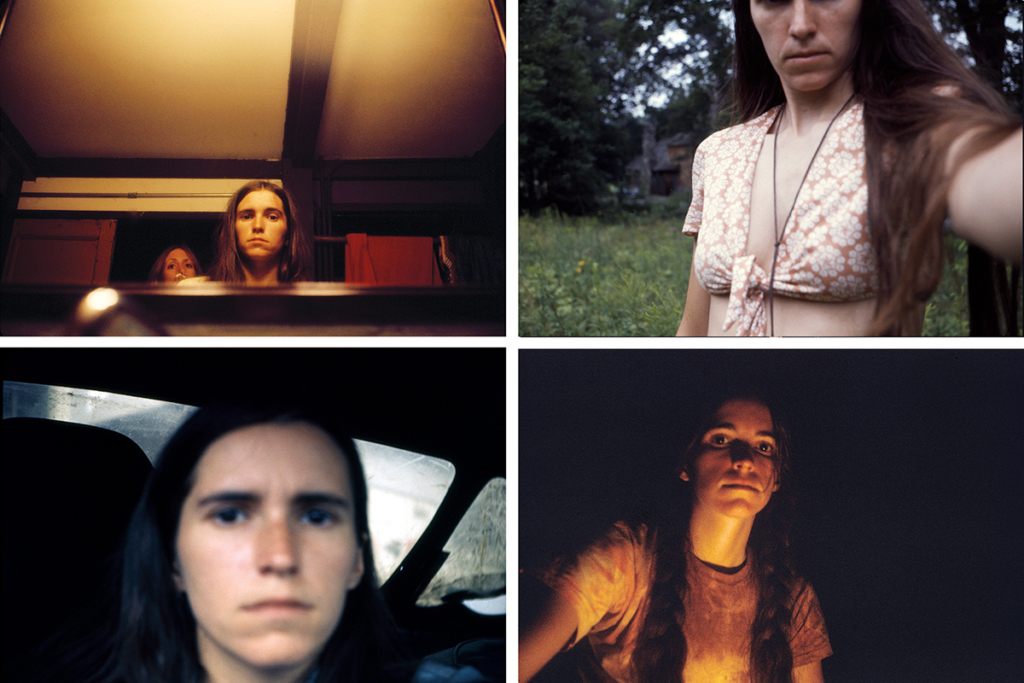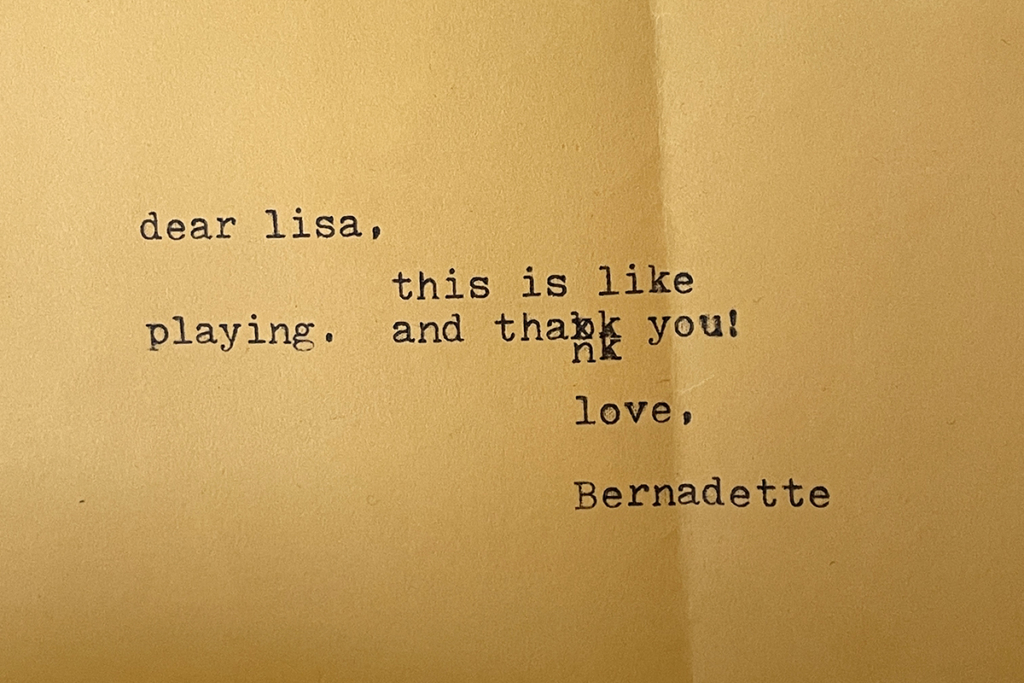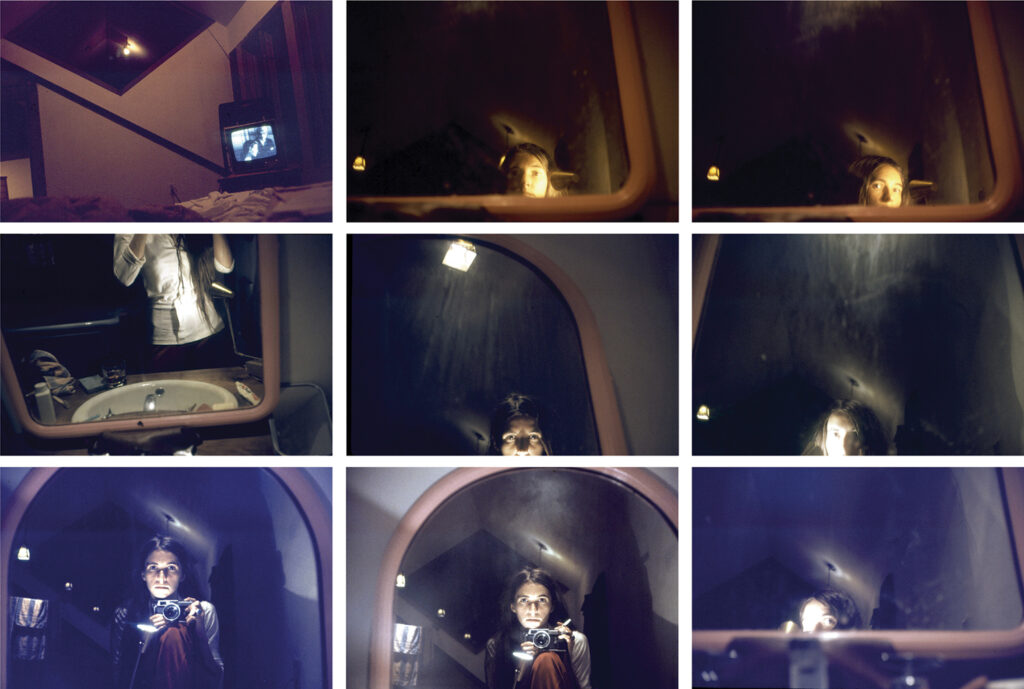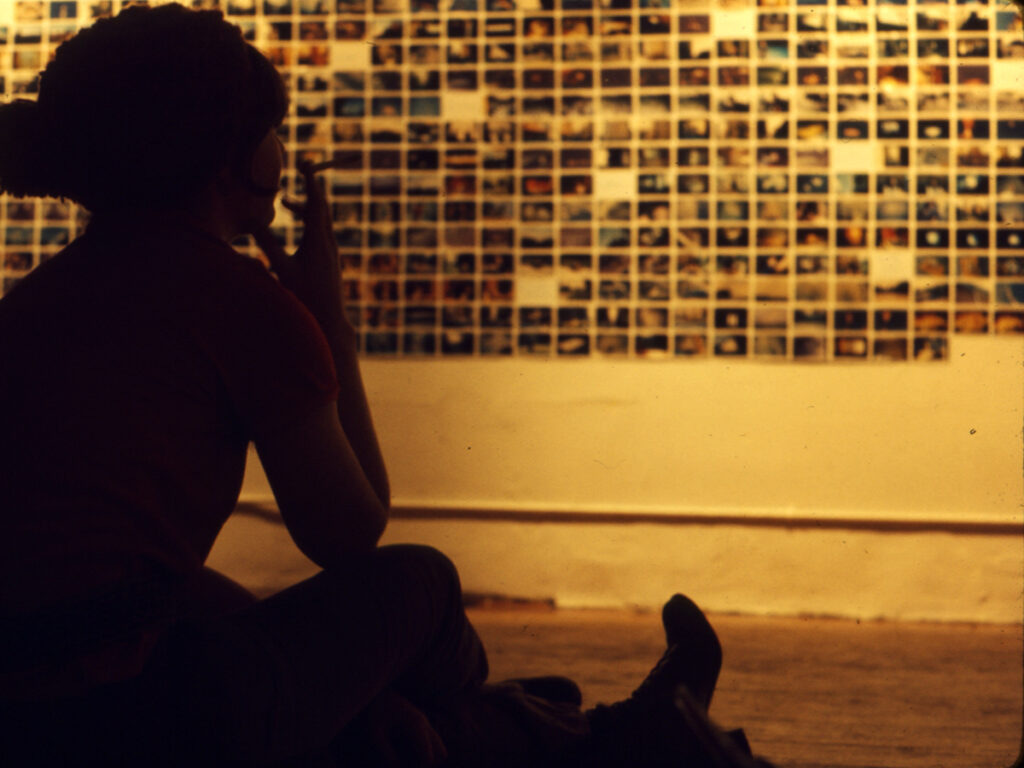Thank you, BernadetteBernadette Mayer, 1945–2022
affinities, 12/02/22

Four self-portraits of Bernadette Mayer from Memory, clockwise from upper left: July 12, July 25, July 7 and July 30, 1971.
On November 22, the day Bernadette died (and still now, a week later) her words—the ones readers and friends hold particularly dear—were seeded throughout the digital landscape. Pictures of book pages with a vast selection of poems and words, all inimitably Bernadette’s—that admixture of directness, honesty, immediacy, with play, surprise, subversion, smarts—were accompanied by intimate remembrances of her and her work. (Even if you didn’t know Bernadette personally, you certainly felt as if you did.) Her impact over fifty plus years has been profound, her radical experiments imparting courage (particularly to women) to not only pursue writing in the midst of life but to write that life too. That impulse as it manifests in Memory—which I am so proud and grateful to have been able to publish—is one of engaging with it all.
As I fielded requests for pictures last week from the media, I went back through the entirety of Memory, searching for her self-portraits (taken by herself or by others with her camera). They show her looking straight at the camera but also beyond it. There are just twenty-seven self-portraits among the 1153 photographs: 1153 clicks of the shutter committing a moment, a glimpse, a stare, a blink to memory/Memory.
Bernadette gave me an immense gift with the challenge of publishing all of her photographs (and her 200,000+ words of text). As I studied each image, greatly enlarged on my computer screen to see everything from the center to the edges, correcting for color, opening up shadows for detail (spying the bat in the rafters!), I could follow her eye, what it fixed on, from what angle she saw it, how she moved around it to see it again, differently. Always, the banal and momentous were given equal weight (and it’s never clear which is which). Closing one file and opening another, I imagined the invisible, too—the time that passed or the ground covered in between each shutter click, in between each day. She asked me once, knowing the kind of time I was spending with them, if her photographs had penetrated my dreams. But really, they were porous, liquid, spilling into liminal spaces—seeing, remembering, dreaming the curtain billowing or the rain falling or the steam from the coffee cup clouding the windshield as if were my own (possibly imagined) memory. It was an invitation to inhabit the world with her, move through her space her time, to see in between and read between the lines, the words, the images. Because she knew then and now that capturing all of it was an impossibility, but you had to try.
She wrote in her introduction to the Siglio edition of Memory:
It’s astonishing to me that there is so much in Memory, yet so much is left out: emotions, thoughts, sex, the relationship between poetry and light, storytelling, walking, and voyaging to name a few. I thought by using both sound and image, I could include everything, but so far, that is not so. Then and now, I thought that if there were a computer or device that could record everything you think or see, even for a single day, that would make an interesting piece of language/information, but it seems like we are walking backward since everything that becomes popular is a very small part of the experience of being human, as if it were all too much for us. Yet every enormity gets closer to the middles of the scientific sentences of which Memory is a loosening part. As a book, with all the photographs, maybe Memory will become the sentence in which science tells us what art is, or the other way around.
I am bereft as I write this, still dumbstruck with sorrow, sorrow I share with her family and friends, her devoted students, and the many writers and readers who knew a truth-teller, a risk-taker, a shaman of daily life when they saw one. The world expanded with Bernadette and will be ever-expanding with the work she gave to it.
Thank you, Bernadette, for everything. With love, Lisa.

more remembrances
Find numerous remembrances in the Poetry Project Newsletter by some of her dearest friends and colleagues, as well as tributes in/at the New Yorker, New York Times, Art Forum, London Review of Books, Momus, Yale Review, Kirkus, New Directions, and the New York Public Library. If I’ve missed any, please let me know. And there is also an amazing collection of essays on her work, published at POST45 in 2021. There are more links to readings, recordings, reviews, excerpts of Memory, as well as to forums on her work, to a collection of her writing experiments and a catalog of her books of poetry here (scroll through/down).
see also
✼ elsewhere:
“How do you know where the boundaries of a life are? How do you know where to stop? Or when something doesn’t apply?” —Nicole Rudick in conversation with Sam Stephenson at AIR/LIGHT
[...]


